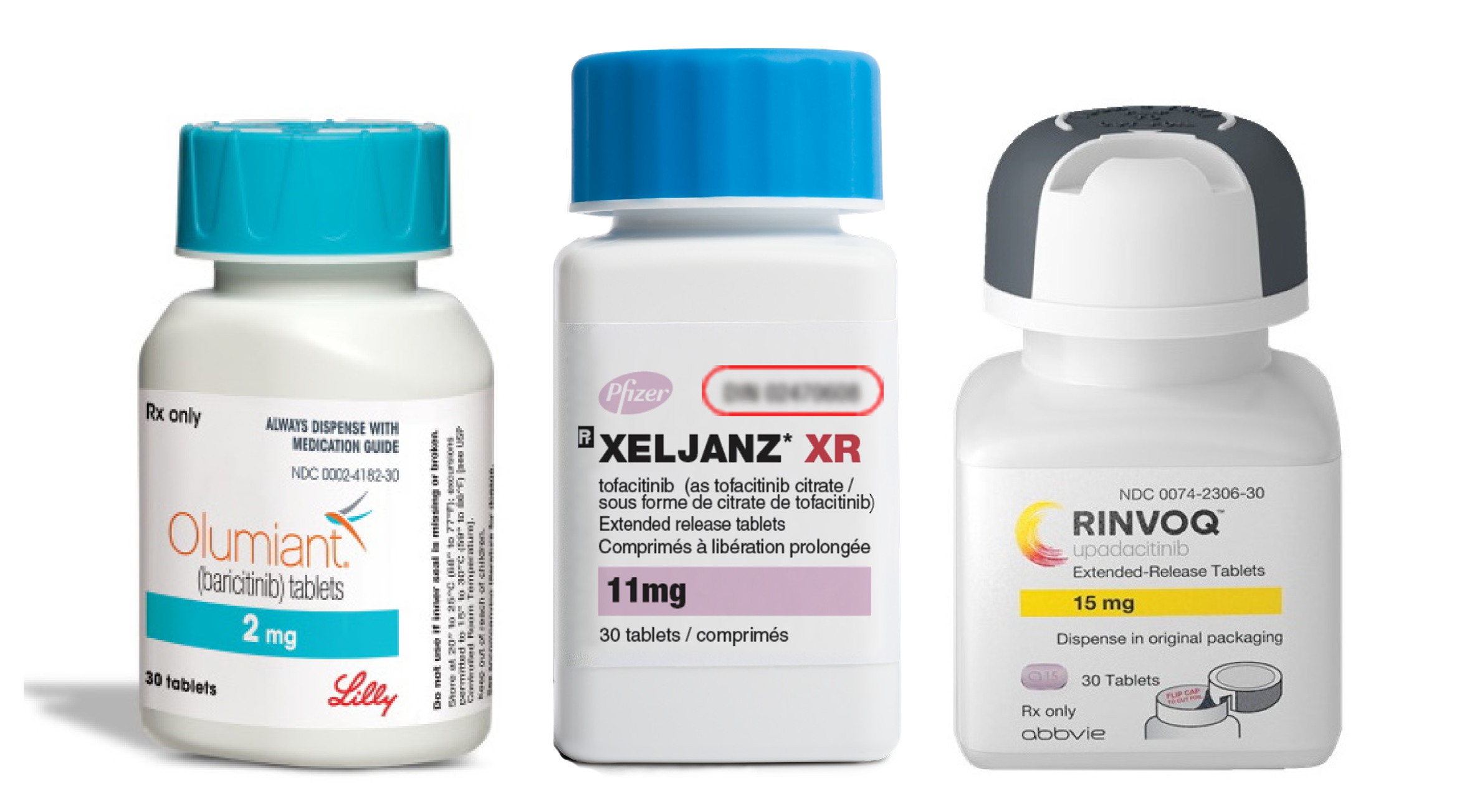 |
|
Data from this retrospective study indicate that JAK inhibitor use in individuals with autoimmune disease who are older than 40 years was associated with a significantly reduced risk of AMD over the first six to 18 months of treatment. Photo: Lilly, Pfizer, AbbVie. Click image to enlarge. |
Recently published findings from a retrospective observational cohort study suggest an association between Janus kinase (JAK) inhibitors and a decreased risk of age-related macular degeneration (AMD) among patients with autoimmune diseases. Three such drugs—baricitinib (Olumiant), tofacitinib (Xeljanz) and upadacitinib (Rinvoq)—are on the market as treatments for rheumatoid arthritis.
The investigators used administrative claims data from two research databases—representing approximately 9.8 million U.S. patients with autoimmune disease—between January 2010 and January 2022.
Eligible patients with autoimmune diseases who underwent JAK inhibitor treatment were propensity score matched (1:1) to study-eligible patients who received a different immunotherapy. The majority of the patient population was female and more than 60% were older than 55 years of age.
Patients included in this analysis underwent at least six months of therapy. Researchers sought to determine the incidence rates of AMD (exudative and nonexudative) over the first six to 18 months of treatment.
In their recent JAMA Ophthalmology paper, the study authors reported that, over the specified treatment period, there was a 49% reduction in the incidence of AMD among patients who received JAK inhibitors vs. those who underwent treatment with different agents in the Merative MarketScan research databases. Among patients in the Optum Clinformatics Data Mart databases, the researchers observed a 73% relative reduction in the incidence of AMD in those who received JAK-inhibitors vs. those who did not.
Summarizing their research in JAMA Ophthalmology, the authors said, “our study provides evidence of an association between JAK inhibitor therapy and a reduced risk of developing AMD in patients with autoimmune diseases. Further research is required to determine the robustness and duration of this effect in larger and/or more representative patient populations and its applicability to other diseases or indications.
“Importantly, the mechanisms underlying the prophylactic action of JAK inhibitor agents against AMD, and how they differ from those of non-JAK inhibitor immunotherapies, remain to be determined,” they continued, while also noting that their findings suggest that the reduction of systemic inflammation via the inhibition of JAK-STAT signaling “represents an additional therapeutic option for AMD management in clinical practice.”
An invited commentary on this study, also published in JAMA Ophthalmology, highlights the implications of this work, including the use of databases for drug discovery in AMD. “Hallak and colleagues’ findings are novel in that they suggest a potential new pharmacologic target for AMD and use patient-level longitudinal administrative claims data, rather than clinical trials, to examine this possibility.”
The commentary adds, “Retrospective administrative claims analyses are a valuable tool in the arsenal of drug discovery and serve as a unique integration that can complement preclinical work facilitating drug repurposing.”
Magagnoli J, Sutton SS, Ambati J, et al. Invited Commentary: Facilitating Drug Repurposing—Using Databases for Drug Discovery in AMD. JAMA Ophthamol. July 11, 2024 [Epub ahead of print]. |


